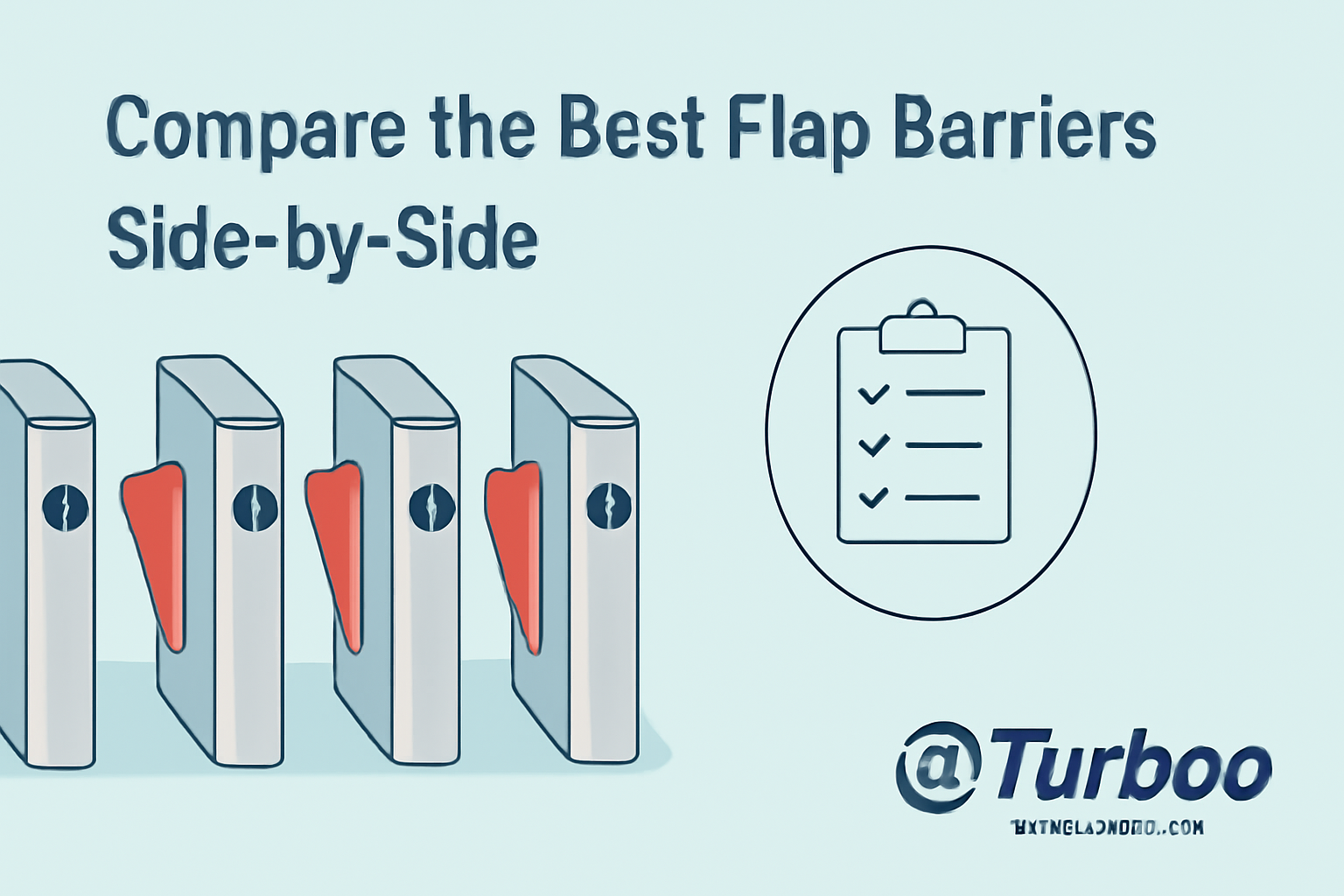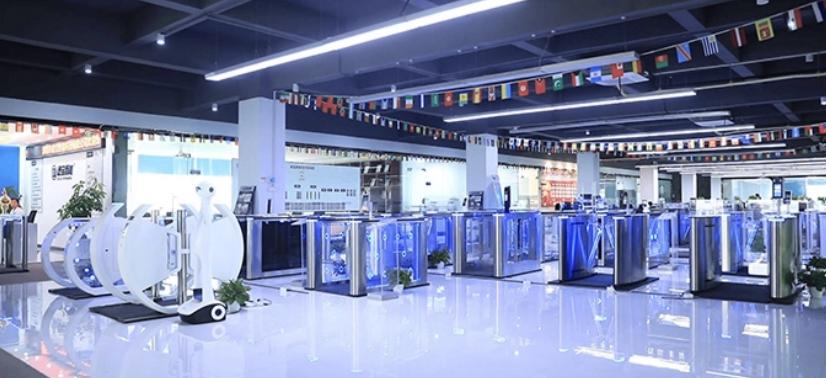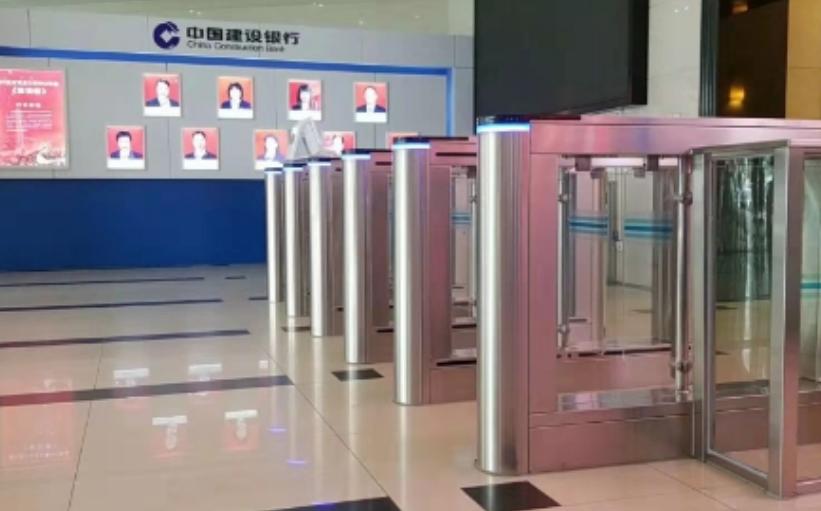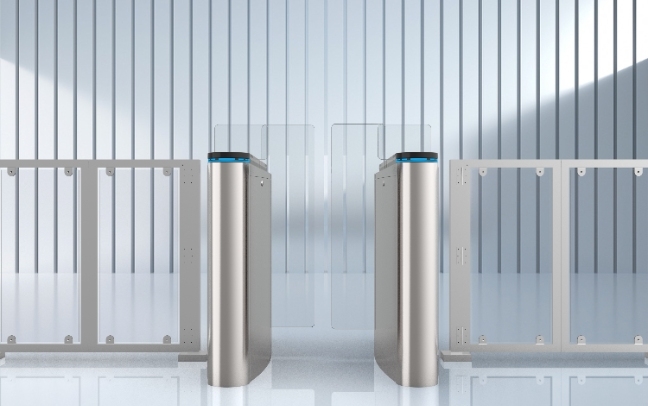Compare the Best Flap Barriers Side-by-Side


When tasked with choosing the right flap barrier, many buyers face the challenge of sorting through numerous models, each offering a variety of features at different price points. It can be overwhelming to compare these options without a clear framework. That’s where a side-by-side comparison comes in handy. By breaking down each barrier model’s key features, buyers can gain a clearer understanding of which option best aligns with their specific needs.
Comparing flap barriers directly helps clarify important factors like performance, security features, price, and long-term value. Without this structured approach, decisions are often made based on incomplete or superficial information, leading to costly mismatches or underperforming systems.
This guide offers a comprehensive breakdown of what to consider when comparing flap barriers, from build quality to technology features, throughput capacity, and more. By the end, you’ll be empowered to make a smarter, more confident purchase, tailored to your facility’s requirements.
What Are the Key Factors in Flap Barrier Comparison
When you compare flap barriers, it’s important to consider a variety of factors that can impact both short-term performance and long-term value. The most significant elements to compare include:
- Cost: The upfront price of the barrier, as well as any hidden costs for maintenance, energy, or upgrades.
- Build quality and materials: How well the barrier is constructed and the materials used to ensure longevity and reliability.
- Throughput capacity: How many users the barrier can accommodate per minute without causing delays.
- Technology features: Integration with access control systems, sensor accuracy, anti-tailgating, and smart monitoring options.
- Warranty and vendor support: The length and coverage of the warranty, as well as the reputation and support services of the manufacturer.
The balance between these factors will determine the overall value you receive from your investment. For example, while a barrier with advanced technology might cost more upfront, it could lead to lower maintenance costs and greater system security in the long run. On the other hand, a more affordable system may meet your needs but lack scalability or advanced features that could help improve operations down the line.
Understanding how to balance these features with your specific project needs is essential for making an informed purchase.
Comparing Cost: What’s Included in the Price
When comparing flap barriers, cost is often the first consideration. Barrier prices can vary widely, with basic models starting at around $1,000 to $2,000 and more advanced systems reaching prices upwards of $5,000 or more. But price is just one part of the story. Understanding what’s included in the price can make all the difference.
Typically, the price of a flap barrier includes the following:
- Physical unit: The motorized cabinet, wings, sensors, and control board.
- Basic installation: The cost to set up and integrate the system.
- Standard features: The core functionality such as speed, throughput, and basic safety features.
However, some models might have additional costs not immediately visible:
- Software integration: If you need to integrate the barrier with an existing access control system, this could involve additional software costs or configuration fees.
- Maintenance and service contracts: Some vendors offer ongoing service plans or require periodic maintenance to ensure optimal performance.
- Energy consumption: Some barriers consume more power than others, leading to higher operational costs over time.
When reviewing different models, be sure to look at this price comparison and ensure you’re accounting for all potential costs—not just the initial purchase price. Knowing the full cost of ownership will help you make a more informed decision.
Build Quality and Durability: What to Look For
Build quality plays a crucial role in the longevity and performance of a flap barrier. The materials used and the construction of the system will determine how well it performs in various environments and how long it lasts before needing maintenance or replacement.
High-quality flap barriers are typically made of:
- Stainless steel: Known for its durability and resistance to rust and corrosion, stainless steel is a common material for the barrier frame and cabinet.
- Polycarbonate or tempered glass: These materials are often used for the flap wings, providing both clarity and impact resistance.
- Aluminum alloys: Often used in the cabinet and frame for lighter, more cost-effective solutions, though it may not offer the same level of durability as stainless steel.
The materials used will impact both the initial cost and the lifetime cost of the system. For example, a flap barrier made from high-quality stainless steel and tempered glass will generally cost more upfront but will have a longer lifespan, particularly in high-traffic or outdoor environments.
When assessing build quality, look at the warranty provided by the manufacturer. A comprehensive warranty often indicates that the manufacturer stands behind the durability and reliability of the system. Moreover, check the finish of the barrier to ensure it will withstand wear and tear, particularly in high-traffic environments where the system will be subjected to frequent use.
Throughput Capacity: Matching Barrier Speed to Facility Needs
Throughput capacity is a critical comparison point when evaluating flap barriers. This refers to how many users can pass through the system per minute (UPM), which is directly related to the barrier’s speed and sensor accuracy.
In facilities with high traffic, such as airports, stadiums, or corporate campuses, barriers need to support a higher throughput rate. The ideal throughput capacity can vary depending on the environment:
- Low-traffic environments: Small offices or medical facilities might only require throughput of 15–25 users per minute.
- High-traffic environments: Airports, public transport hubs, and large corporate buildings might need barriers that can handle 40–50 users per minute or more.
Barriers with higher throughput are generally faster but may come at a higher price due to advanced motor systems, sensors, and integration capabilities. When comparing systems, assess whether the barrier’s speed and throughput are appropriate for your expected user volume.
Additionally, consider flexibility: Can the barrier be adjusted to change the throughput capacity as needs evolve? Some models allow users to control the speed or mode, which could be valuable in mixed-use spaces with varying foot traffic.
Technology Features: What Modern Barriers Offer
Flap barriers today are not just about opening and closing. Technology features play a critical role in enhancing security, usability, and integration with existing systems. These features can make or break the overall value of the barrier system you select.
One of the most important features is anti-tailgating. This technology helps ensure that only authorized individuals are allowed through by detecting when someone tries to slip through behind an authorized user. It works by using sensors that monitor the area around the barrier’s passage. If tailgating is detected, the system will either prevent the flap from opening or trigger an alert.
Another key technology feature is integration with access control systems. Modern barriers allow for seamless integration with a wide range of access control systems, such as RFID readers, biometric scanners, or even mobile phone-based access via NFC. This enables centralized management and enhanced security, especially in larger facilities.
Smart monitoring and remote diagnostics are increasingly common in today’s barriers. These features allow facility managers to monitor the barrier’s status in real-time, receive notifications about maintenance needs or faults, and even control the barrier remotely. Integration with cloud-based platforms means you can track system performance and receive alerts, helping to prevent downtime and improving overall maintenance efficiency.
When comparing models, be sure to evaluate the technology compatibility with your existing infrastructure. Some barriers are more flexible than others, supporting a variety of access protocols (Wiegand, TCP/IP, RS-485, etc.) and communication systems, while others may be more restrictive.
Advanced technology features can add value, but they also often come with a higher price tag. It’s important to weigh these features against your specific security and operational needs. For more information on these features, refer to the detailed functions guide.
Warranty and Vendor Reputation: Why These Matter
When comparing flap barriers, the warranty and vendor reputation are often overlooked but are essential considerations for long-term reliability and support. A solid warranty indicates that the manufacturer stands behind the product, while a strong reputation ensures that you’ll have reliable support when needed.
Most reputable vendors offer warranties ranging from 1 to 5 years, with some even offering extended coverage for key components such as motors and control systems. Warranties can vary significantly, with some covering only parts, while others include labor and service. Before purchasing, ensure the warranty covers critical components, especially those that might require costly repairs, such as the motor or control board.
Vendor reputation is also a crucial comparison factor. A well-known, established vendor often has better customer service and post-sale support. You want a vendor that offers comprehensive technical support, easy access to replacement parts, and timely response times for emergency repairs. A company with a solid track record of servicing large-scale installations or long-term product reliability is an excellent indicator of the barrier’s overall value.
To assess vendor reputation, look for customer feedback, case studies, and expert reviews. Many manufacturers will have testimonials from customers in similar industries, which can give you confidence that their systems are reliable and well-supported.
For a deeper look at vendor reputations and brand reliability, check the brand comparison guide, which provides insights into leading brands and their performance.
Evaluating Customer Reviews: Insights from Other Users
Customer reviews and expert evaluations can provide valuable insights when comparing flap barriers. Feedback from those who have already installed and used the system gives you an honest perspective on what works well and what might need improvement.
Customer reviews often highlight real-world experiences that manufacturers may not emphasize in their marketing materials. For example, users might point out how well the system performs in high-traffic areas or if there are any recurring issues with sensors, installation, or software compatibility.
Look for reviews that cover key areas such as:
- Performance in real-world scenarios (e.g., speed, accuracy, reliability)
- Ease of installation and setup
- Customer service and support after the purchase
- Long-term durability and maintenance needs
In addition to user reviews, expert product evaluations and third-party reviews from organizations like HID Global offer detailed assessments of flap barrier systems. These reviews often test products in various environments and provide in-depth analyses of features, usability, and overall value.
By combining user feedback with expert analysis, you can gain a well-rounded view of each model’s strengths and weaknesses, helping you make a more informed decision.
Trade-offs Between Price and Features
When you compare flap barriers, you will inevitably face trade-offs between price and features. Understanding these trade-offs is critical for making a decision that fits your budget without sacrificing essential performance and functionality.
- Budget-friendly models: These tend to be more basic, focusing on the core features—motorized flaps, basic safety sensors, and standard throughput capacity. They are ideal for environments with low traffic or less demanding security requirements but might lack advanced features like integration with smart systems or enhanced tailgating prevention.
- Mid-range models: These typically balance price with advanced features. They may include better build quality, higher throughput capacity, and additional safety features, such as anti-pinch protection and advanced sensors. They’re ideal for medium-sized facilities with moderate traffic or those looking for a solid combination of performance and value.
- High-end models: These are designed for large-scale, high-traffic environments and offer the full spectrum of features—top-tier build quality, high-speed motors, advanced sensor technologies, and extensive integration options with security systems. The price point will be higher, but they offer reliability and advanced features that justify the investment, especially in critical or high-security installations.
When making this decision, consider your facility’s size, traffic flow, and security needs. If you’re working with a tighter budget, don’t feel pressured to opt for the most expensive system if the advanced features aren’t essential. For example, a large corporate office may not require the same throughput capacity or high-tech features as a stadium or airport.
Balancing price and features is about finding the sweet spot between what you need and what your budget can accommodate. The price comparison guide can help you better understand the cost breakdown of various models.
Aligning Barrier Features with Specific Project Needs
It’s crucial to align your flap barrier selection with the specific needs of your project. This alignment ensures that the system you choose provides the necessary functionality without overspending on unnecessary features.
For example:
- If your project is focused on high-security areas, you’ll want a system with advanced anti-tailgating and sensor accuracy.
- For high-traffic environments, prioritize throughput capacity and speed, ensuring that the barrier can handle large volumes of users efficiently.
- For outdoor use, focus on weatherproofing, corrosion resistance, and temperature range.
When evaluating different models, be sure to match the barrier’s specifications with your project’s goals. Understanding your needs will help you choose a system that’s both effective and cost-efficient.
For a more in-depth look at aligning barrier specifications with your project, refer to the buying guide.
Conclusion
Choosing the best flap barrier for your facility doesn’t have to be complicated. By conducting a side-by-side comparison, you can effectively weigh factors like cost, build quality, throughput, and technology features. A thorough evaluation will help you avoid unnecessary expenses and choose a barrier that fits both your immediate needs and long-term goals.
Armed with the insights from this guide, you’ll be able to make a confident, informed decision and invest in a system that enhances both security and efficiency in your facility.
FAQs
Q1: What should I look for in a flap barrier for a high-traffic area?
Look for high throughput capacity, fast opening speeds, and features like anti-tailgating and remote monitoring to manage large volumes efficiently.
Q2: Are all flap barriers compatible with biometric access systems?
Not all barriers are compatible. Be sure to verify compatibility with your access control system, especially for biometric or mobile-based solutions.
Q3: How do I evaluate the warranty of a flap barrier system?
Ensure the warranty covers key components (motor, control board) and includes labor and service. Compare warranties across different models for value.
Q4: Can flap barriers be installed outdoors?
Yes, but ensure the model has the appropriate IP rating and weatherproofing features for outdoor environments.
Q5: How do I compare prices across different flap barrier models?
Use a price comparison tool to evaluate the full cost of ownership, including installation, energy use, and maintenance.












